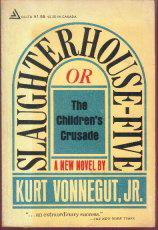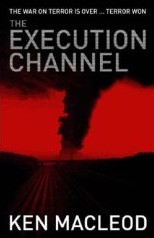Yesterday, at the age of ninety, Arthur C. Clarke died. He was the last of the Big Three of Golden Age science fiction –Asimov, Clarke and Heinlein– to pass away and as such his death is the end of an era. He was there when science fiction as a genre first crystallised out of Hugo Gernsback’s earnest attempts to predict the future, he answered John W. Campbell’s challenge to pull science fiction up by its bootstraps and raise it out of its pulp origins and he remained a constant presence in science fiction for over six decades, as fan, writer and science booster. He was there to see it develop from an almost cultish obsession practised by handful of enthusiasts to become so mainstream that most of the record grossing movies of the last couple of decades are science fiction. Of course, he himself was in large part responsible for making science fiction so
popular and even respectable.
Some of the things he should be remembered for:
- The idea of stopping time and what opportunities and difficulties that brings with it
- That he felt the need in childhood’s End to explicitely distance himself from the ideas in the novel
- That actually, you can survive vacuum for a couple of minutes without a spacesuit
- “Overhead, without any fuss”…
- Inspiring Stanley Kubrick to film 2001 and especially its Pan-Am vision of the future
- “the Star”
- Geosynchronous orbits.
Clarke was one of the writers who got me into science fiction. I devoured his books when I was twelve and when I started rereading some of them a few years back, I was pleased to discover they still held up. Never known as a great stylist, Clarke nevertheless had a quiet charm all his own. I think Patrick Nielsen Hayden said it best, in his remembrance of Clarke:
in Clarke a practical science-and-engineering outlook coexisted with a mystical streak a mile wide. Indeed, much of his work establishes the basic template for one of modern science fiction’s most evergreen effects: the numinous explosion of mystical awe that’s carefully built up to, step by rational step. So much of Clarke’s best work is about that moment when the universe reveals its true vastness to human observers. And unlike many other writers who’ve wrestled with that wrenching frame shift, for Clarke it was rarely terrifying, rarely an engine of alienation and despair. He was all about the transformational reframe, the cosmic perspective, that step off into the great shining dark. He believed it would improve us. He rejoiced to live in a gigantic universe of unencompassable scale, and he thought the rest of us should rejoice, too.


